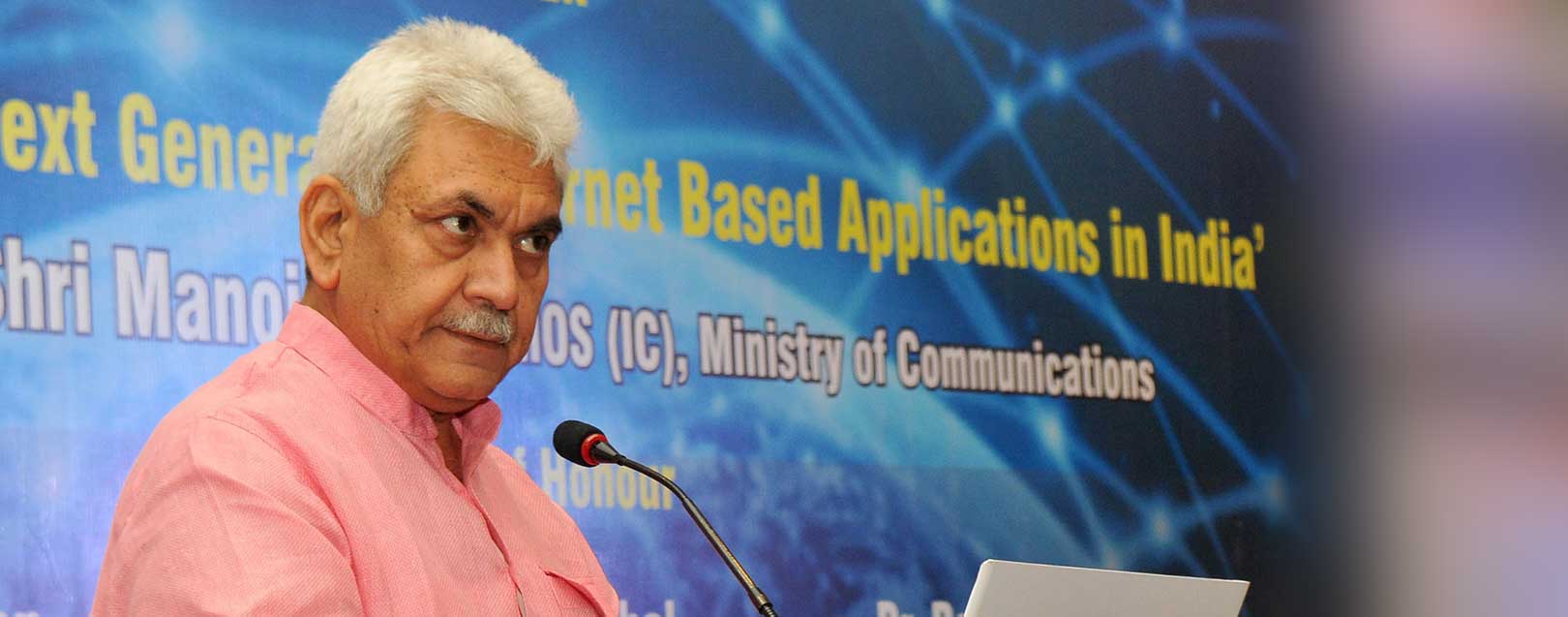
Indian Telecom Market is expected to cross the Rs 6.6 trillion revenue mark by 2020, Manoj Sinha
The Dollar Buisness Bureau
The Minister of Communications Manoj Sinha said that the Indian telecom industry has seen a paradigm shift from a voice centric market to a data-centric market. While voice business still contributes a large chunk towards operator revenues, data revenues have shown an exponential growth trajectory over the last few years.
Speaking at a Workshop on Telecom India, the Minister said that by the end of 2016 the number of internet subscribers in India was 391.50 million making India globally the 2nd highest in terms of internet users.
He said that mobile data traffic also grew by 76% in India in 2016 which was primarily attributed to increased smart phone penetration. This growing usage of smart phones, especially in urban areas, has increased the usage of internet on hand-held devices – in 2016, 559 megabytes of mobile data was generated per month by an average smart phone, up from 430megabytes per month in 2015.Consumption of video content is also forecasted to be 75 percent of India’s mobile data traffic by 2021, compared to 49 percent in 2016.
Sinha said that advancements in innovative IoT technologies, like health monitors, smart transport, smart meters among others, is projected to result in 21% increase in M2M services. These advances will result in a significant growth of mobile data, and as the telecom sector moves to newer technologies, TSPs will need to identify innovative avenues to monetise this data opportunity. He said that Indian Telecom Market is expected to cross the Rs 6.6 trillion revenue mark by the year 2020.
The Minister said that the Indian Government had launched the ‘Digital India’ initiative in July 2015 which had three broad targets – providing Digital Infrastructure as a core utility to every citizen, Governance and Services on Demand as well as Digital empowerment of citizens.
Sinha also said that one of the projects under the ‘Digital India’ initiative was ‘BharatNet’, launched to deploy high-speed optical fiber cables to connect 2.5 lakh Gram Panchayat across the country by 2018. This project would also help in increasing the fiberized sites in India which currently stands at less than 20 per cent as compared to other developed countries. The project is being implemented in Phases, with more than100,000 gram panchayats connected under Phase-I as of July2017 and states like Kerala, Karnataka, Chhattisgarh, Haryana, Uttar Pradesh and Madhya Pradesh neared 100 per cent completion.






 to success.
to success.